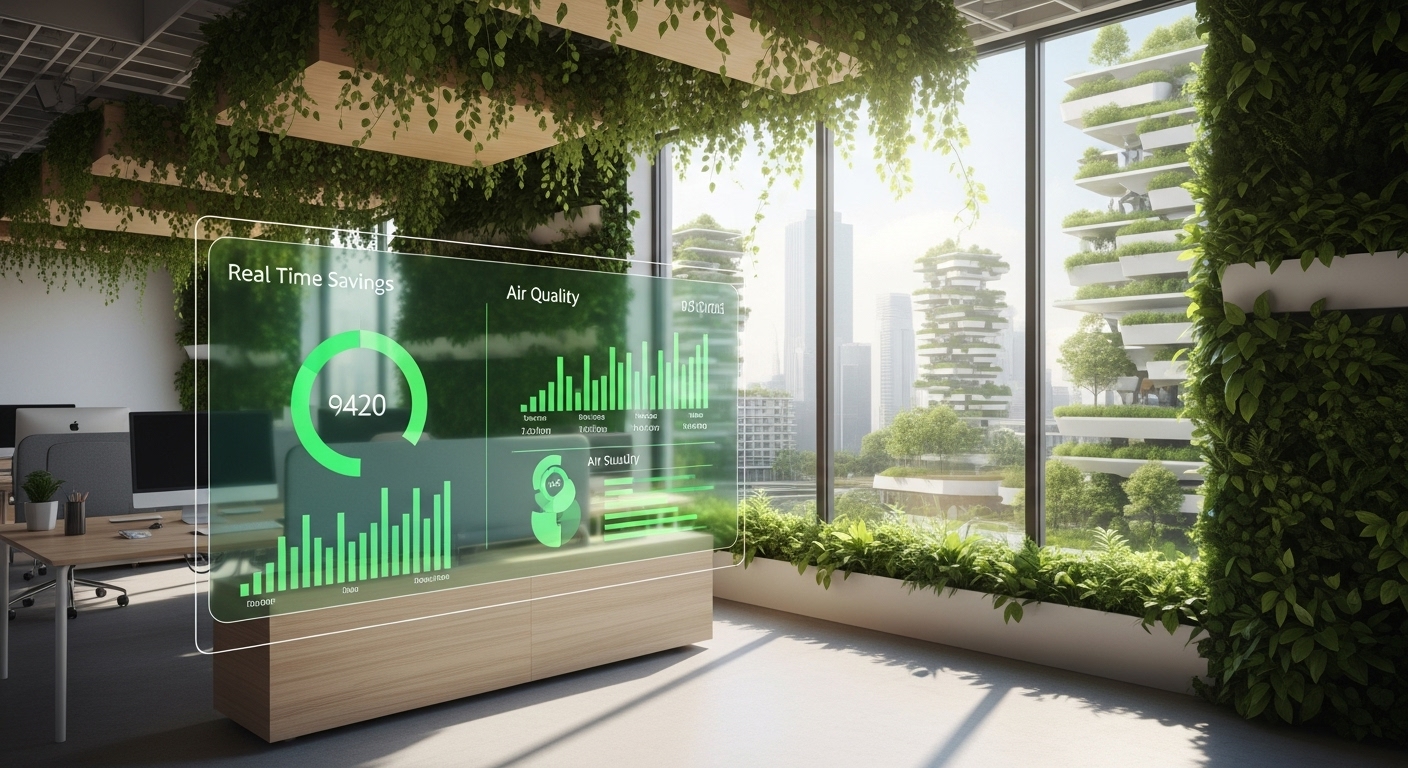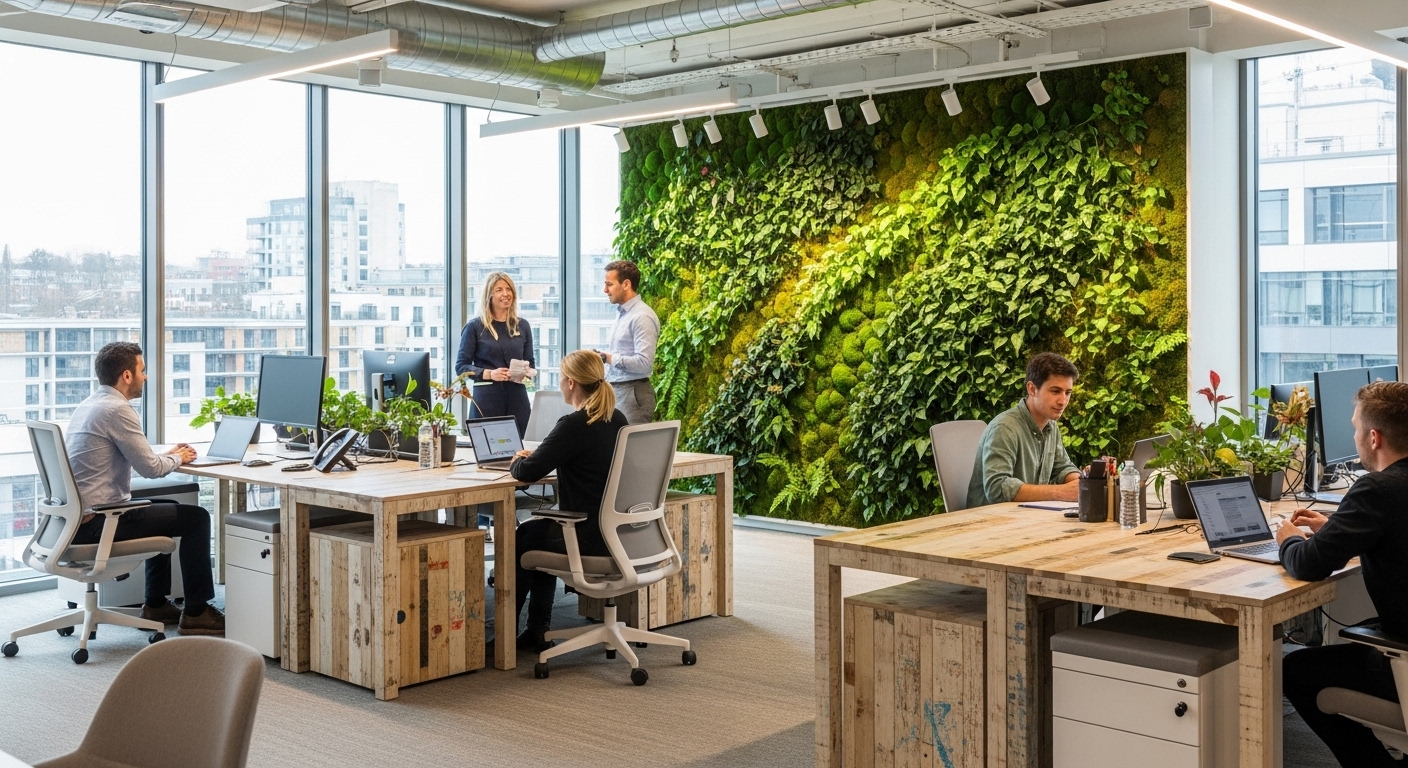In an era where corporate responsibility is no longer a footnote but a headline, businesses are facing a dual mandate: operate efficiently and sustainably. The modern workplace is at the nexus of this challenge, often representing a significant portion of a company’s carbon footprint. But what if the very technology that powers productivity could also champion planetary health? This is the promise of smart office technology. Far beyond automated coffee makers and voice-activated lights, a new generation of integrated systems is creating intelligent environments that actively reduce waste, conserve energy, and boost the bottom line. This article explores the ‘green dividend’—the powerful return on investment that comes from embedding sustainability into your workspace through smart tech. We will delve into how these innovations are redefining energy management, optimizing resource use, and proving that what’s good for the planet is ultimately great for business.
Beyond the Smart Bulb: Redefining Energy Management in the Workplace
The most significant impact of smart office technology on sustainability comes from its ability to revolutionize energy consumption. Traditional office buildings are notoriously inefficient, with lighting, heating, ventilation, and air conditioning (HVAC) systems often running at full capacity regardless of occupancy. Smart technology introduces a layer of intelligence that eradicates this waste. At the forefront are IoT-enabled HVAC systems that use a network of sensors to monitor occupancy, temperature, and even CO2 levels in real-time. Instead of heating or cooling an entire floor, these systems can create micro-climates, directing conditioned air only where it’s needed. AI algorithms can take this a step further by learning occupancy patterns and analyzing weather forecasts to pre-emptively adjust building controls for maximum efficiency. Similarly, smart lighting systems use motion sensors and photosensors to adapt to human presence and natural daylight. Lights automatically dim or turn off in empty rooms and adjust their intensity based on the amount of sunlight pouring through the windows. The cumulative effect of these adjustments is substantial. According to the U.S. Department of Energy, commercial buildings can reduce their energy costs by up to 30% by implementing smart energy management systems. This isn’t just about replacing old bulbs; it’s about creating a responsive, predictive energy ecosystem that eliminates waste by design.
Optimizing Every Drop: Smart Tech for Water and Waste Management
A truly sustainable office looks beyond energy to manage all resources effectively, and smart technology provides the tools for granular control over water and waste. Water consumption in large commercial buildings, particularly in restrooms and landscaping, can be staggering. Smart fixtures, such as sensor-activated faucets and toilets, offer a first line of defense by preventing unnecessary water use. More advanced systems integrate IoT sensors into the plumbing infrastructure to detect leaks in real-time, sending instant alerts to facilities managers before a minor drip becomes a major flood and a catastrophic waste of resources. This proactive approach can cut water waste by over 20% in many facilities. The same principle applies to waste management. Smart bins equipped with ultrasonic sensors monitor fill levels and automatically notify custodial staff when they need to be emptied. This data-driven approach replaces inefficient, fixed collection schedules with a dynamic system that optimizes labor, reduces the use of plastic liners, and ensures that resources are allocated precisely when and where they are needed. By extending intelligence to every resource, smart offices transform mundane operational tasks into opportunities for significant environmental and financial savings.
The Data-Driven Green Mandate: From Analytics to ESG Reporting
Perhaps the most powerful component of a smart office is the centralized data it generates. Every sensor—from occupancy monitors to air quality detectors—feeds information into an Integrated Workplace Management System (IWMS) or a Building Management System (BMS). This creates a digital twin of the physical space, providing facilities managers with an unprecedented view of building performance. Dashboards can visualize energy consumption by floor, department, or even by individual workstation, pinpointing areas of inefficiency that were previously invisible. This data is not merely diagnostic; it’s predictive. AI analytics can identify equipment that is consuming anomalous amounts of energy, signaling the need for predictive maintenance before a costly failure occurs. Furthermore, this trove of verifiable data is invaluable for corporate Environmental, Social, and Governance (ESG) reporting. In a world where investors, regulators, and customers demand transparency, the ability to produce accurate, real-time reports on energy savings, carbon footprint reduction, and water conservation is a significant competitive advantage. It moves sustainability from a vague corporate goal to a measurable, auditable, and continuously improving operational metric.
People and Planet: Enhancing Well-being Through Sustainable Tech
The benefits of a sustainable smart office extend directly to its most valuable asset: its people. Employee well-being and environmental responsibility are deeply intertwined. Technologies that optimize the physical environment for sustainability also create a healthier and more comfortable experience for occupants. For example, smart air quality sensors that monitor CO2, VOCs (Volatile Organic Compounds), and humidity can trigger automated adjustments to the ventilation system, ensuring fresh, clean air that has been proven to enhance cognitive function and reduce sick days. Human-centric lighting systems can mimic the natural circadian rhythm of daylight, which improves employee mood, focus, and sleep patterns. Providing employees with personal control over their immediate environment via a smartphone app—allowing them to adjust local temperature and lighting—not only enhances comfort but also fosters a sense of empowerment and engagement. When a company visibly invests in technologies that benefit both the planet and its people, it cultivates a powerful culture of care and purpose. This can be a deciding factor in attracting and retaining top talent, particularly among younger generations who prioritize working for environmentally conscious organizations.
Calculating the Green ROI: The Financial Case for a Sustainable Office
While the environmental and cultural benefits are compelling, the adoption of smart office technology ultimately hinges on a strong financial case. The ‘green dividend’ is a tangible return on investment composed of both direct and indirect savings. The most immediate return comes from dramatically lower utility bills. Reductions of 15-35% in energy and water costs are common, providing a clear and predictable payback period for the initial technology investment. Beyond direct savings, the ROI grows. Predictive maintenance, enabled by IoT sensors, reduces equipment downtime and lowers repair costs. Efficient space utilization, guided by occupancy analytics, can defer or eliminate the need for costly real estate expansion. The indirect returns are equally significant. Buildings with certified green credentials, such as LEED or BREEAM, often command higher rental rates and property values. A strong, demonstrable commitment to sustainability enhances brand reputation, attracting environmentally-conscious customers and investors. Moreover, it serves as a powerful tool for talent acquisition and retention, reducing recruitment costs and improving productivity. When all these factors are combined, the financial argument becomes undeniable: investing in a sustainable smart office is not an expense, but a strategic investment in long-term operational resilience and profitability.
Overcoming Hurdles: Integrating Tech for a Seamless Green Transition
Embarking on the journey to a smart, sustainable office is not without its challenges. One of the primary hurdles is the integration of new technologies with legacy building systems. Many older buildings were not designed for the digital age, and ensuring that new IoT sensors can communicate with decades-old HVAC systems requires careful planning and specialized expertise. Interoperability is key; selecting platforms that use open standards and can connect with a wide range of hardware is crucial to avoid being locked into a single vendor’s ecosystem. Data security and privacy are another paramount concern. A smart office collects vast amounts of data, including information about employee movement and presence. It is essential to implement robust cybersecurity measures to protect this data from breaches and to be transparent with employees about what data is being collected and how it is being used. Finally, securing initial capital and stakeholder buy-in can be difficult. A successful transition requires a clear, data-backed proposal that outlines the long-term ROI, a phased implementation plan to manage costs and minimize disruption, and a change management strategy to educate and engage employees. By proactively addressing these hurdles, organizations can ensure a smooth and successful transition, unlocking the full potential of their green dividend.
The evolution of the workplace is accelerating, and smart technology is at its core. However, its greatest contribution may not be in sheer productivity, but in its capacity to forge a sustainable future. The concept of a ‘green dividend’ reframes the conversation around smart offices, shifting the focus from mere convenience to strategic necessity. By intelligently managing energy, optimizing resources, and enhancing employee well-being, these technologies offer a clear path to reducing environmental impact while simultaneously boosting financial performance. The data-driven insights they provide empower organizations to make smarter decisions, meet ESG goals, and build a resilient operational model. As businesses look to the future, the most successful will be those that recognize the intrinsic link between planetary health and corporate prosperity. The smart, sustainable office is no longer a futuristic ideal; it is the essential foundation for the responsible and profitable enterprise of tomorrow.





